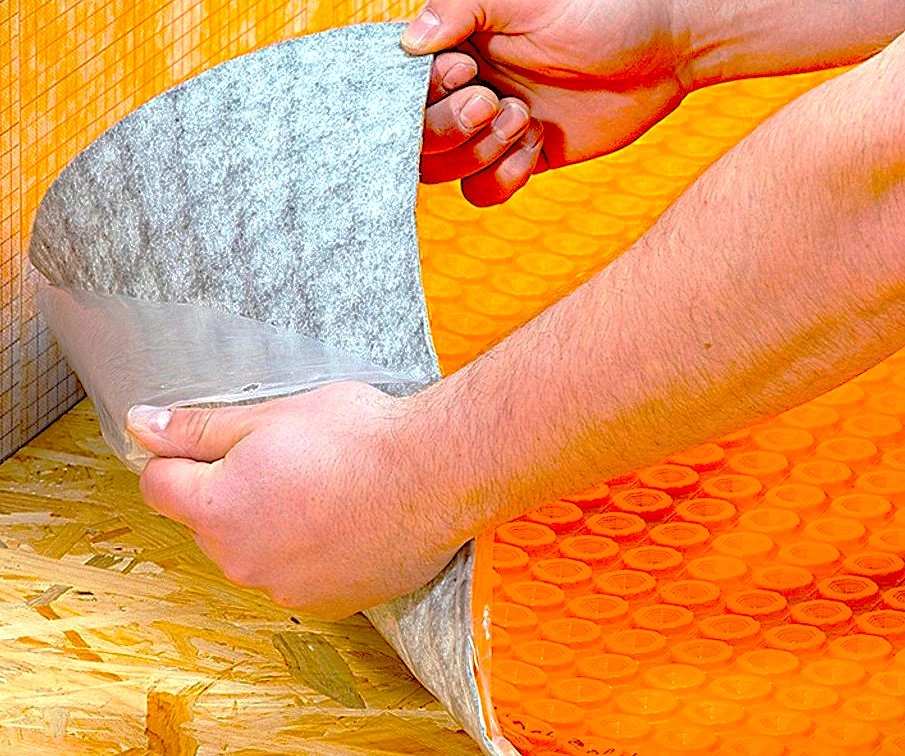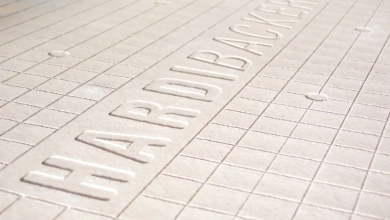Schluter DITRA Issues

For tile installation projects on floors, Ditra is the preferred waterproof uncoupling membrane. Tile installation is popular among professionals and do-it-yourselfers for a variety of reasons. First of all, it has an uncoupling membrane that makes sure the tiles are unaffected by floor motions.
It is waterproof, too. As a result, it does not make it easier for moisture to move from top to bottom. It may be applied to a variety of flooring, including OSB, gypsum, and concrete, and it is simple to install. This underlayment can be put in places with a lot of traffic because it allows for mobility.
Schluter Ditra is a viable option for tile installation jobs for a number of reasons. However, Ditra has been known to have some issues, much as other products.
Some can be prevented. There’s not much you can do about it, others. Here are some potential problems if you intend to use Ditra.
1. The process of delamination
Delamination is one of the frequent issues that many do-it-yourself tile installers have with Ditra. Given how highly Ditra is praised for its longevity, it can be disheartening when that occurs. However, it’s critical to comprehend the reasons behind Schluter Ditra delamination.
Schluter strongly advises using an unaltered thinset mortar while installing their membranes. To prevent incompatibilities, purchasing their Schluter SET is the better choice. Delamination could result from using the incorrect thinset—in this case, a customized thinset.
Ditra is an uncoupling membrane that is waterproof. For the modified thinset to dry, moisture must be allowed to escape. Ditra’s waterproof nature means that moisture cannot escape, causing the thinset to fail to cure properly.
As a result, the floor may eventually delaminate. Additionally, Schluter will deny your warranty claim since you utilized the incorrect thinset mortar.
Please adhere to the original thinset mortar in order to prevent the Ditra from delaminating.
2. Tile Cracking
The purpose of Ditra’s uncoupling capabilities is to stop tile cracking. Nevertheless, there are several situations in which tiles may start to fracture after you’ve laid them over.
Poor installation is primarily at blame for this issue. It’s not just Ditra; improperly laid underlayment can lead to tile cracking. This is the reason why tiles break when Ditra is put in place.
The waffle pattern is visible when you look at a piece of Ditra uncoupling mat. This design was made to provide you space to fill it with thinset so that the tile would stay in place.
What if you don’t properly fill these waffles? Alternatively, there is a considerable probability that the tiles will shatter if there is insufficient coverage.
Because there won’t be enough thinset in the waffles to hold the tiles firmly, they will crack. Be extremely careful while putting in tiles over Ditra. Make sure to fill the waffle openings using the trowel’s flat side.
Additionally, using tiles over Ditra on an unauthorized substrate can cause them to break. This is uncommon since Ditra can be applied to almost any substrate, such as OSB and plywood, that is found in most homes.
Unfortunately, it is not advised to place Ditra over a substrate like linoleum. The tiles may crack because of the poor connection.
Additionally, producers who claim to offer a thinset that can stick to linoleum should not be believed. Additionally, if you use the incorrect kind of thinset, Schluter will not respect their warranty.
Ditra comes with an instruction manual when you purchase it. You can follow along or view a manufacturer-shared installation video. If you don’t install it correctly, the tiles will crack.
3. Complaints about warranties
Schluter’s Ditra membrane is covered by a warranty. However, a lot of people have complained that when the system breaks down, they don’t respect their guarantee. Despite the large number of complaints, many consumers are unaware of the specifics of this guarantee.
If the Ditra malfunctions and you have solely utilized Schluter’s products—including Thinset—they will honor their warranty.
If you use a customized thinset or another kind of bond that isn’t accepted, Schluter won’t honor their warranty. Therefore, if you wish to receive payment in the event that Ditra fails, please only use their products.
4. Stickiness
Poor adhesion is another issue that installers have encountered with Ditra. As long as you put Ditra over an authorized substrate and use the right thinset, it should attach with ease.
As a result, those who have adhesion issues can have erred in these two areas.
The majority of Ditra issues are brought on by improper product usage
Reading the list of typical Schluter Ditra issues above should have alerted you to the fact that most issues are caused by incorrect installation rather than the product itself.
Ditra is among the best-reviewed uncoupling membranes available on the market. Both professional contractors and do-it-yourself tile installers commend it.
You may install this waterproof membrane beneath tiles with the help of a variety of online tools.
It’s a good idea to hire a professional to handle the Ditra installation if you don’t think you can handle it yourself. Even though it can cost more, you can be confident that the finish will be long-lasting.
Will There Be Issues If Ditra Seams Is Left Open?
Yes, it will eventually cause issues. Installing Ditra over a subfloor serves to shield the materials underneath from mold growth and water damage.
Ditra is unquestionably completely waterproof. But when two Ditra mats are joined, a seam is formed. That seam may serve as a moisture entrance site if left exposed.
The project may fail if the seams are not sealed. Schluter offers a watertight self-adhesive seaming tape, which is wonderful news. By doing this, Ditra’s seams will be sealed and any problems related to water will be avoided.
Will Durability Be Affected by Tiling Right After Ditra Installation?
Schluter concurs that after Ditra is laid over, tiles can be put in right away. However, it is best to wait for the mortar to cure first.
Rushing the project increases the likelihood of making an expensive error. You can install the Ditra later if you let it sit overnight.
Does Ditra Cause Subfloor Damage?
Ditra is not intended to harm the subfloor; rather, it is meant to protect it. If the Ditra is not properly put and the seams are not covered, a subfloor may sustain harm. Consider OSB as an example. Water will seep through the Ditra if it is not sealed, harming the wood flow underneath.
Despite Ditra’s durability, there is another situation in which it could harm the subfloor: during disassembly. It will be an absolute nightmare if you ever have to remove the Ditra underlayment.
Ditra forms a strong link with the flooring; therefore, if you pull it roughly, some of the subfloor may come off. Therefore, you must remove Ditra from the subfloor carefully and gently.
Is the Schluter Ditra Underlayment Advisable?
You are now aware of the typical issues related to Ditra, their causes, and ways to prevent them. Is it still appropriate to install tiles using this product?
For the following reasons, Ditra is among the greatest uncoupling mats you will ever find:
- When properly installed, Ditra is an excellent way to keep tile and grout from cracking.
- Ditra disperses the tile’s weight uniformly across the subfloor.
- It won’t obstruct doorways and is a little thick.
- Ditra is incredibly lightweight and simple to set up.

